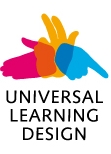Abstract
|
Introduction
Project “Recursos docentes accesibles” —accessible teaching documents— is an action within the Teaching Improvement and Innovation Program at University of Barcelona, whose broad objective is providing templates for the creation of most widespread teaching documents, and easy procedures to create alternative versions of them. Those alternative versions will include changes in color, fonts or other presentational attributes and also conversions to different digital formats, thus promoting inclusive education in the university by the integration of alternative formats in everyday contents.
Within the mathematics context, this broad objective imposes specific requirements for mathematical notation/formulae. Most text processors process mathematical notation/ formulae through a proprietary codification system or, even, through graphical formats procedures, so they are not suitable for assistive technologies like screen readers or screen magnifiers. This situation imposes a severe barrier for blind and low vision students when using learning resources within mathematics area. People with dyslexia or ADHD could also benefit from screen readers or changes in presentation when reading mathematical notation/formulae in order to understand them better –even when, for those groups, this solution is not essential.
Taking those precedents in mind, the project team decided, as a specific objective for accessibility on mathematical learning resources, to test the feasibility of various options for the creation of documents with mathematical notation/formulae and their conversion to MathML, the world's most accessible format for mathematics.
Methodology
A testbed was designed with two main components:
-
A selection of 139 different formulae, with a good coverage of symbols and expressions, based on the formulas offered by LibreOffice Math 3.3.2, which distinguishes 11 different sets of formulae.
-
A selection of three text processors with specific capabilities for processing mathematical notation: MS Word 2007 (12.0.6661.5000) SP3 MSO (12.0.6662.5000) and LibreOffice Math 3.3.2, for office documents; and Latex MiKTeX 2.9 TeXnicCentre 1.0, for Latex documents. The selection was based on the results of a survey on the tools commonly used by faculty members in the Department of Mathematics of University of Barcelona.
All the formulae were processed within the editors, in order to obtain evidences of capability and quality on viewing them and listening to them. In the case of MS Word 2007, formulae were tested both on a regular version of the editor and an empowered version with MathType 6.0c. by Design Science, a formula editor that allows the creation of mathematical notation for inclusion in desktop and web applications.
Once all the formulae were processed with the three editors, results were converted into MathML, in order to view and listen to them on different internet browsers. All converted formulas were tested on Firefox (on Windows), Opera (on Windows) and Safari (on MAC), which have native support for MathML. After this first test, LibreOffice was discarded as an option. Further tests were done with MS Word and LaTex on IE with MathPlayer plugin.
The test was performed during November 2012, when presentational results were gathered and, in the case of MathPlayer, also results of listening. The evaluation of results involved two different indicators: quality of displays for user visualization and quality of reading for user audition. For the first indicator, values were: not acceptable display; acceptable display; and best display. For the second indicator, values were: MathPlayer doesn’t read the formula; MathPlayer reads the formula partially; MathPlayer reads the formula correctly. In this second indicator, the listening was carried out by choosing Spanish language and “reading for the blind” setup option.
Results
Results show that MS Word empowered with MathType is the best solution in terms of number of symbols correctly interpreted, quality of displays for visualization and quality of readings for audition -even when 6 over the 139 formulae were not supported.
MSWord+MathType provides better displays than LibreOffice, although some symbols in LibreOffice were not covered by the first mentioned tools. By default LaTex exports formulas in a nonstandard typography which hinders understanding in viewing and in Mathplayer listening, but this can be corrected in the conversion process.
As for browsers, visualization on IE empowered with MathType is the best solution although Firefox alone gives better results in comparison with any other browser without plugins.
Further works
Test results will allow us to deliver evidence-based advice to the University professors (and, specially, to the Department of Mathematics) on best options for accessible mathematical formulas within teaching resources. Also, we will advise blind or low vision students about the best options for optimum viewing and listening resources containing mathematical formulas. In addition, some models devoted to mathematical formulae will be included in the catalog of accessible materials for teachers within the University and advices on how to convert Latex formulas and how to create formulas with MathType will be disseminated.
|









